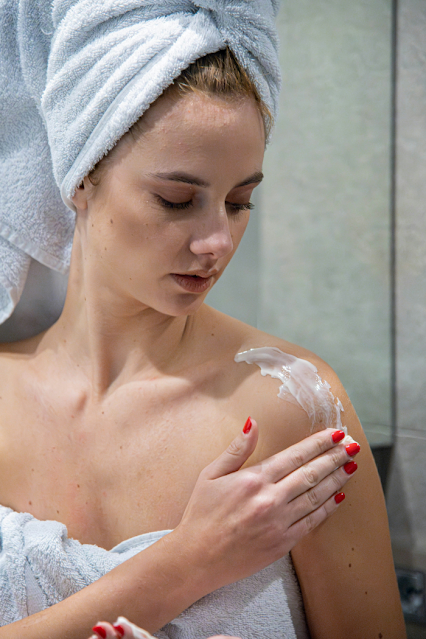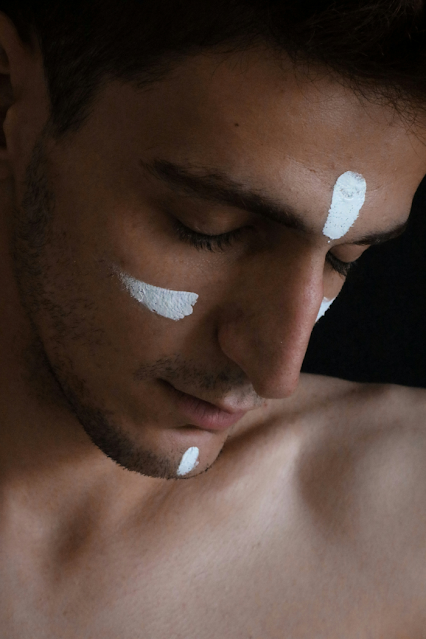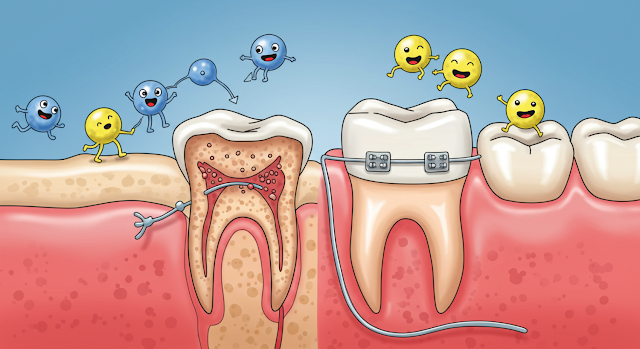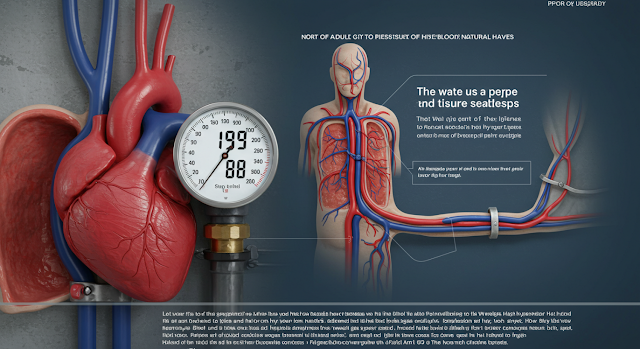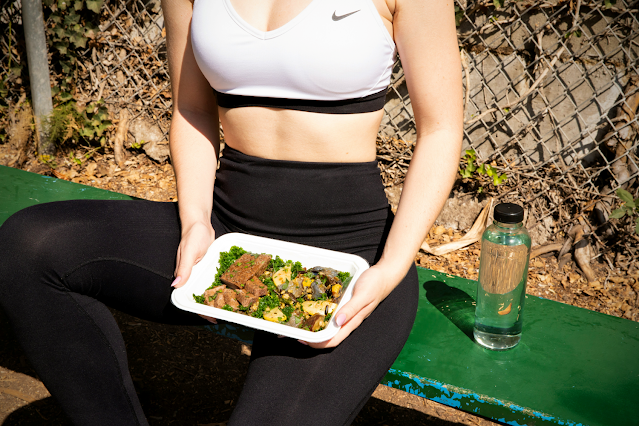The other day, someone told me, “Wow, you look so young!” and honestly, it made my week. 😊 We all want to hear that, right? It’s this universal desire to hold onto that youthful vibrancy. But what’s the real secret? I’ve spent years figuring this out, not just for myself but for so many people I’ve helped. It’s not about one magic potion; it’s about understanding the big picture. When people guess my age, they’re usually off by a few years, and today, I’m ready to spill the tea on how I do it. It really boils down to three things: your skin, your posture, and your expression. While we could talk for days about how a confident posture and a relaxed, happy face can take years off, today we’re going to zero in on the one thing we can all start improving tonight: our skin.
The Four Pillars of Youthful Skin ✨
Before we dive into the nitty-gritty, let’s get on the same page about what “youthful skin” even means. In my experience, it comes down to four key factors. When these are all in harmony, you get that undeniable “wow” effect.
- Even Tone: This is all about having a consistent, uniform color across your face, free from dark spots or redness. It’s the canvas for everything else.
- Smooth Texture: Think about the surface of a polished stone versus a rough one. We’re aiming for skin that feels soft and has a refined, barely-there pore appearance.
- Sleek Contour: This refers to the firmness and gentle curves of your face. Youthful skin has a natural plumpness and is free from significant sagging or hollowness.
- Radiant Glow: This is that “lit-from-within” quality. It’s not about being oily; it’s about having healthy, hydrated skin that reflects light beautifully.
Now, a quick word on posture, because it’s genuinely the unsung hero of looking young. You can have the most amazing skin, but if you’re hunched over from “tech neck,” it creates shadows and can make your skin appear to sag more than it actually does. Standing tall with a strong core helps keep your entire facial structure looking lifted and more defined. Seriously, it’s a game-changer!
Skincare Myth-Busting: Let’s Get Real 💥
Alright, let’s have some fun. I see so much conflicting advice out there, and frankly, a lot of it is just plain wrong. It’s time to debunk some of the biggest skincare myths that might be secretly sabotaging your skin. Let’s go!
Myth #1: The “One Sheet Mask a Day” Rule is the Ultimate Secret
Oh, the infamous “one sheet mask a day” trend. I get the appeal! It feels so luxurious, like a mini-spa treatment every single night. And look, if the ritual of putting on a mask helps you relax and commit to a routine, I’m not totally against it. Consistency is the hardest part of skincare, so if that helps you stick with it, that’s a small win.
However—and this is a big however—from a dermatological perspective, daily sheet masking can be a recipe for disaster for many skin types. A sheet mask works by creating an occlusive barrier, which forces the ingredients in the essence to penetrate deeper into your skin. In fact, it can increase absorption by five to ten times!
Most cosmetic products contain 40-50 different ingredients. When you dramatically increase their absorption rate every single day, you’re also dramatically increasing your risk of developing irritant contact dermatitis or a full-blown allergic reaction. Your skin can suddenly become red, itchy, and inflamed from an ingredient it previously tolerated just fine, all because of the high dosage.
Furthermore, if you have oily or acne-prone skin, trapping all that rich essence under a mask for 15-20 minutes can clog your pores. The result? A few days later, you might notice a sudden crop of whiteheads or pimples and not make the connection. For most of us, using a sheet mask 1-2 times a week is the sweet spot. It gives you the benefits without overwhelming your skin.
Myth #2: DIY Natural Masks (Cucumber, Yogurt, etc.) are Better
I totally get the charm of whipping up a skincare treatment in your own kitchen. It feels wholesome and pure. But honestly, you’re often better off leaving it to the pros. While a cold cucumber slice can feel nice and soothing, the risks often outweigh the benefits.
For one, your kitchen is not a sterile environment. It’s so easy to introduce bacteria from the cutting board, the knife, or the cucumber’s skin directly onto your face, which can lead to infections. Secondly, even natural ingredients can be irritating in high concentrations. Remember, the dose makes the poison! And let’s be real, with how affordable and well-formulated sheet masks are these days, is it really worth the mess and the risk? I’d say save the yogurt for your breakfast parfait. 😉
Myth #3: Hot, Steamy Showers are Great for Your Skin
I know, a long, hot shower can feel incredibly relaxing, especially after a tough day. But it’s one of the worst things you can do for your skin barrier. That hot steam and water strip away the natural oils (lipids) that keep your skin protected and hydrated. It’s like taking a powerful solvent to the delicate mortar that holds your skin cells together.
Here’s a rule of thumb I live by: Try to finish your shower before the bathroom mirror gets completely fogged up. A foggy mirror means one of two things: either the water is too hot, or you’ve been in there for too long. Keeping your showers short and lukewarm is a huge favor to your skin.
Myth #4: You MUST Exfoliate Regularly for Smooth Skin
Ah, exfoliation. This is probably one of the most misunderstood topics in skincare. People think that any flakiness or uneven texture needs to be scrubbed away. But that’s a massive oversimplification.
Your skin has a natural 28-day turnover cycle where dead cells are shed on their own. Exfoliating just speeds up this process. While it can make your skin look brighter and feel smoother temporarily, it can also cause serious damage if done incorrectly.
The key is understanding *why* your skin is textured. Is it because you have oily, congested skin with clogged pores, or is it because you have dry, dehydrated skin that’s flaking? People can almost never tell the difference, and honestly, even dermatologists can find it tricky sometimes.
| Skin Type & Concern | The Right Approach |
|---|---|
| Oily / Acne-Prone Skin with clogged pores and blackheads. | Gentle exfoliation (e.g., with salicylic acid) 1-2 times a week can be beneficial to help clear out the pores. |
| Dry / Sensitive Skin with flaky patches. | Do NOT exfoliate! The flakiness is a sign of a damaged moisture barrier. The answer is intensive hydration and moisturizing to repair the barrier. Scrubbing will only make it worse. |
If you have conditions like atopic dermatitis or rosacea, or if you’ve ever found that exfoliating just makes your skin red and angry, please step away from the scrubs. Your skin is begging for moisture, not abrasion.
Myth #5: Vaseline is a Miracle All-in-One Face Moisturizer
The “slugging” trend with Vaseline went viral, and I can see why. It’s cheap, accessible, and seems to make your skin feel incredibly soft overnight. But there’s a critical piece of information missing from most of these viral videos.
Vaseline (petroleum jelly) is an occlusive. This means it doesn’t add moisture (it’s not a hydrator); it simply forms a seal on top of your skin to prevent the moisture already in your skin from escaping. This is great for wound healing!
Your face has the highest concentration of sebaceous (oil) glands on your entire body. When you slather a heavy, non-breathable barrier like Vaseline all over it, you’re trapping oil, sweat, and bacteria. For many people, this is a one-way ticket to clogged pores, whiteheads, and breakouts. The effect isn’t always immediate, so you might not connect the dots for a few days.
So, where is Vaseline useful? It’s fantastic for your lips, which don’t have oil glands and need that occlusive protection. It’s also excellent for small cuts or areas of extreme dryness, like your cuticles or heels. But for your face? Please, just use a well-formulated moisturizer.
Myth #6: The 10-Step Routine is the Goal
I call this “skincare maximalism,” and it’s one of the most pervasive myths out there. The idea that you need an essence, a serum, an ampoule, a lotion, a moisturizer, an eye cream, and a night cream is just fantastic marketing, not fantastic skincare.
Here’s the problem: when you layer that many products, you’re doing two very bad things.
- You’re playing allergy roulette. With 40-50 ingredients per product, a 7-step routine means exposing your skin to over 200 different chemicals. If you get a reaction, you’ll have no idea what caused it.
- You’re suffocating your pores. Almost all of these products are emulsions of oil and water. Layering them is like piling on six oily blankets. Your skin might feel “moist” for 12 hours, but it’s just a greasy film that can lead to congestion.
A truly effective routine is about using a few, well-chosen, high-quality products. I tell all my clients to start with this powerhouse trio:
- A hydrating Toner
- A potent Ampoule or Serum
- A barrier-repairing Cream
That’s it. Instead of adding more products, you adjust the *frequency* of application based on how your skin feels.
📋 Quick Summary: Myth-Busting Cheatsheet
Limit sheet masks to 1-2 times a week to avoid irritation and clogged pores.
More products isn’t better. Stick to a core trio: Toner, Serum, and Cream.
If your skin is flaky, it’s thirsty. Drench it in moisturizer, don’t attack it with exfoliants.
It’s a superhero for dry lips and minor cuts, but keep it off your face to avoid breakouts.
Is Your Diet Wrecking Your Skin? 🍕
We’ve talked a lot about what you put *on* your skin, but what you put *in* your body is just as important. Have you ever noticed you break out after a weekend of junk food? That’s not a coincidence. There’s a powerful connection between your gut health and your skin health.
Highly processed foods, sugary drinks, and certain food sensitivities can cause inflammation in your gut. This can lead to a condition sometimes called “leaky gut,” where tiny food particles pass into your bloodstream, triggering an immune response that can show up on your skin as acne, eczema, or general redness and irritation.
A Real-Life Example 📝
I once worked with a 15-year-old boy who had severe, painful atopic dermatitis and constant stomach aches. We ran a delayed food sensitivity test, which looks for inflammatory responses to different foods. Sure enough, he had a strong reaction to milk protein and eggs. After we removed those and other processed foods from his diet, his skin and his stomach issues improved dramatically. It was life-changing for him.
This information is for educational purposes only and should not replace professional medical advice. Food sensitivities can be complex and are unique to each individual. If you suspect your diet is impacting your skin, it’s always best to consult with a qualified professional like a dermatologist or a registered dietitian.
The takeaway isn’t that everyone needs to cut out milk and eggs. It’s that if you’re struggling with persistent skin issues, looking at your diet is a critical step. Simply reducing your intake of processed foods, refined flour, and sugary drinks and focusing on fresh, whole foods can make a world of difference.
Putting It All Together: My No-Nonsense Daily Routine 🗓️
Okay, so how do we apply all this knowledge? The most important thing is creating a simple, consistent routine that is tailored to *your* skin. Here’s a look at my personal routine, which is designed to be effective without being harsh.
My Evening Routine 🌙
- Cleanse Once, Cleanse Right: I wear sunscreen every day. To remove it properly without stripping my skin, I use a single, effective cleanser—usually a slightly alkaline one that can break down mineral sunscreen without the need for a harsh double cleanse. The goal is to get clean in one step to protect the skin barrier.
- Hydrate & Treat: Immediately after cleansing, while my skin is still slightly damp, I pat in a hydrating toner with my hands. Then I apply a treatment serum (ampoule) to target any specific concerns.
- Moisturize & Seal: I finish with a good, solid moisturizer to lock everything in and support my skin barrier overnight. That’s it!
My Morning Routine ☀️
- Gentle Cleanse: In the morning, my skin isn’t “dirty.” It just needs a gentle refresh. I use a mild, pH-balanced (slightly acidic) cleanser. If my skin feels particularly sensitive, I’ll just splash it with lukewarm water. I would NEVER use my stronger evening cleanser in the morning.
- Moisturize: I’ll usually apply a bit more of my serum and a lighter layer of my cream to prep my skin for the day.
- Protect: The final and most crucial step is always sunscreen. No exceptions!
Your routine should be a flexible blueprint, not a rigid set of rules. Listen to your skin. If you live in a hot, humid climate, you might need lighter products. In a cold, dry winter, you’ll need to layer on more moisture. The key is consistency.
Frequently Asked Questions ❓
Phew, that was a lot! But I hope busting these myths helps you build a smarter, more effective skincare routine. True radiance comes from consistency and understanding what your skin actually needs, not from chasing the latest trend. What are your thoughts? Did any of these myths surprise you? Share them below! 😊

